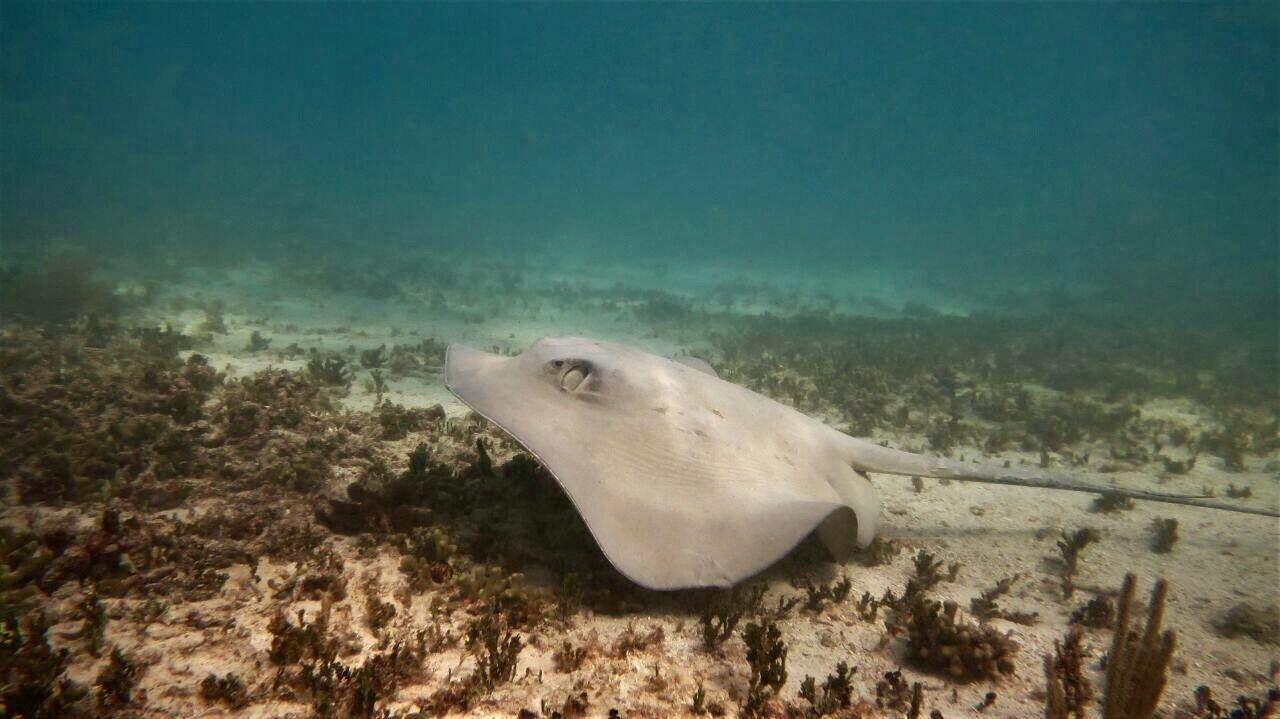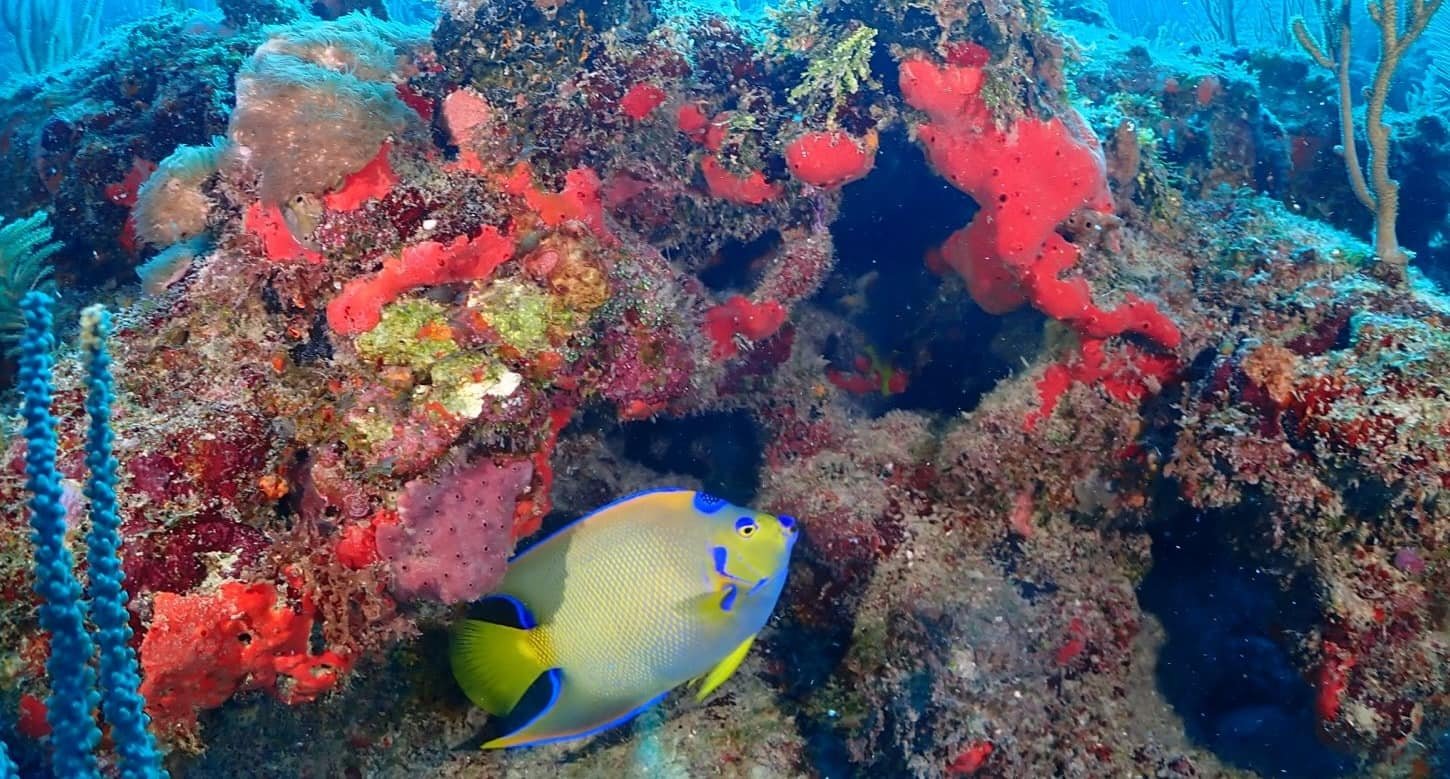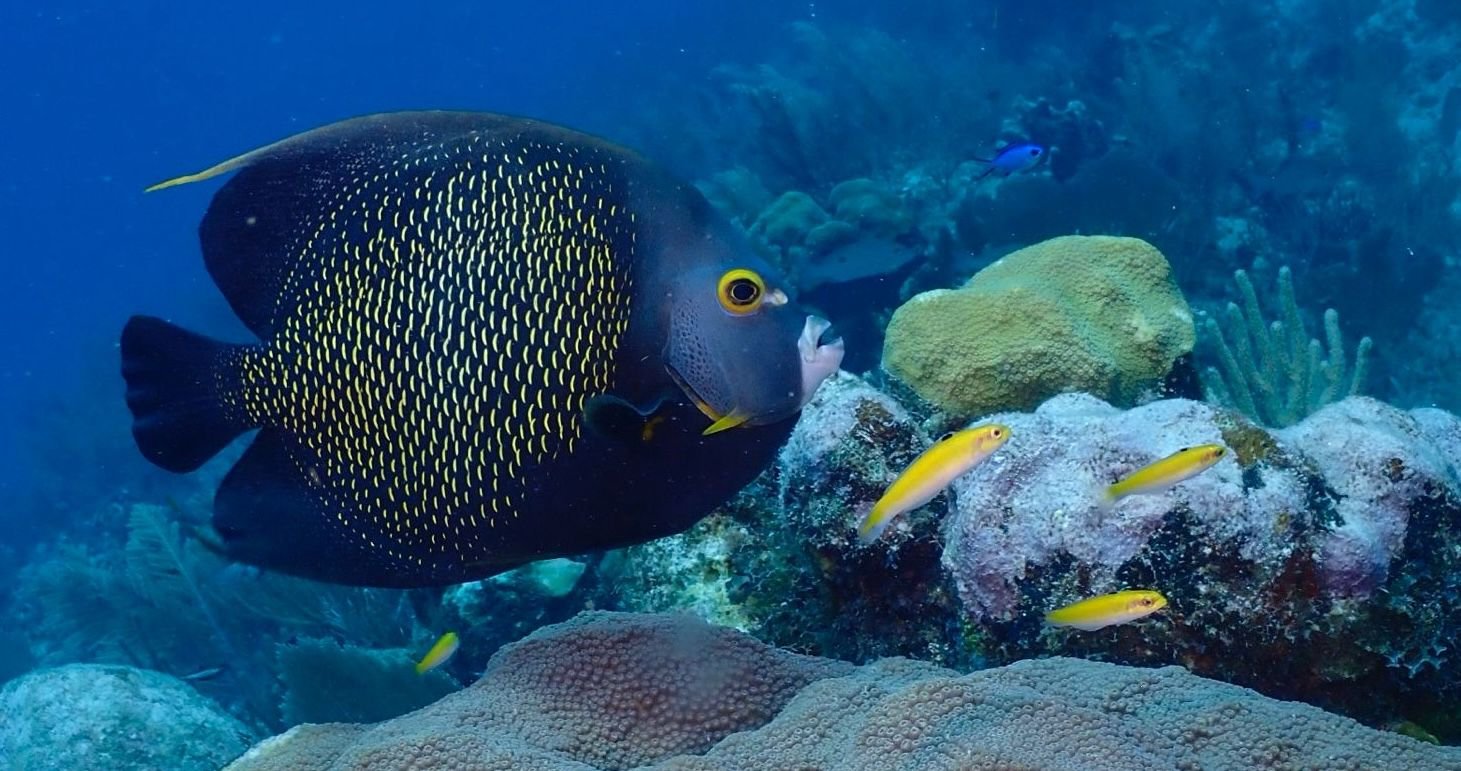Tulum Marine Life: What You’ll See While Diving - Snorkeling
Tulum isn’t just about stunning beaches and cenotes—it’s also home to an incredibly diverse underwater ecosystem. Whether you're diving the Mesoamerican Reef or snorkeling close to shore, you’ll encounter vibrant marine species that bring the Caribbean Sea to life. Here's a breakdown of the most common—and most exciting—marine animals you might meet.
Turtles
Hawksbill Turtle
(Eretmochelys imbricata)
Hawksbill turtles are easy to recognize with their sharp, curved beaks and colorful, patterned shells. You’ll often see them swimming around coral reefs in Tulum, where they help keep the reef healthy by eating sponges.
Fun Fact: Hawksbill turtles can eat sea sponges that are toxic to most animals!
Loggerhead Turtle
(Caretta caretta)
Loggerhead turtles have large heads and strong jaws, which they use to crush crabs and shellfish. They are less common than green turtles but can sometimes be spotted around deeper reefs.
Fun Fact: Loggerheads are named for their unusually large heads and powerful bite.
Green Sea Turtle
(Chelonia mydas)
Green sea turtles are calm and gentle. You might spot them eating seagrass or slowly gliding near the reef. They're a peaceful part of the underwater world in the Riviera Maya.
Fun Fact: Green turtles get their name from the green color of their fat—not their shell—because they eat mostly plants.
Stingrays
Southern Stingray
(Hypanus americanus)
Southern stingrays are one of the most common rays in Tulum. You’ll often spot them gliding over sandy bottoms or half-buried in the sand, using their flat bodies to stay hidden.
Fun Fact: They use their wings to stir up sand and find food like shrimp and crabs.
Caribbean Torpedo Ray
(Narcine bancroftii)
This ray looks smaller and rounder and is known for its ability to produce electric shocks to defend itself. Though not commonly seen, they are sometimes spotted resting under the sand.
Fun Fact: Despite their electric powers, torpedo rays are harmless if left alone.
Caribbean Whiptail Stingray
(Styracura schmardae)
This large, round-bodied ray can grow quite big and has a long whip-like tail. It’s more shy than the southern stingray but sometimes seen near the reef or in sandy lagoons.
Fun Fact: The Caribbean whiptail stingray can reach up to 6 feet across!
Eels
Green Moray Eel
(Gymnothorax funebris)
With their long, muscular bodies and gaping mouths, green moray eels are one of the most commonly spotted eels on Tulum’s reefs. They often peek out from rocky crevices or coral ledges.
Fun Fact: Their green color actually comes from a layer of yellow mucus over their blue skin—helping protect them from infection.
Fish
Queen Angelfish
(Holacanthus ciliaris)
Known for its bold blue and yellow colors, this beauty is often seen near coral heads.
Fun Fact: They often swim in pairs and are known to be curious around divers
Rock beauty Angelfish
(Holacanthus tricolor)
With a striking yellow front half and deep black rear, the rock beauty angelfish is one of the most eye-catching fish on the reef.
Fun Fact: They are often spotted in pairs and are known to be very territorial.
Blue Tang
(Acanthurus coeruleus)
These are the same vibrant blue fish made famous by Dory! They're common on Tulum’s reefs.
Fun Fact: Their color changes from yellow in youth to deep blue as they grow.
French Angelfish
(Pomacanthus paru)
This striking fish has a dark body with yellow-edged scales and is often seen with its mate.
Fun Fact: They form lifelong pairs and stay close together while swimming.
Grey Angelfish
(Pomacanthus arcuatus)
This angelfish has a rounded body with a silvery-gray tone and light speckles. It's calm and often seen near reef structures.
Fun Fact: Juveniles look totally different—striped black and yellow—making them easy to confuse with a different species
peacock flounder
(Bothus lunatus)
This flat, oval-shaped fish is a master of camouflage, often blending so perfectly with sandy or rocky bottoms that you won’t notice it until it moves.
Fun Fact: The peacock flounder can change color in just a few seconds to match its surroundings—and it has both eyes on one side of its head!
black grouper
(Mycteroperca bonaci)
Large and powerful, black groupers often hang out around deep reef edges and rocky drop-offs. They're known for their thick bodies and big mouths.
Fun Fact: Groupers can change sex from female to male as they mature!
rainbow parrotfish
(Scarus guacamaia)
With its vivid greens, blues, and pinks, the rainbow parrotfish is one of the largest herbivorous fish on Caribbean reefs, often seen grazing on algae-covered rocks and coral.
Fun Fact: Parrotfish play a vital role in keeping coral reefs healthy—and their feeding helps create soft, sandy beaches!
Queen Triggerfish
(Balistes vetula)
Vibrant and bold, the queen triggerfish is easily recognized by its electric blue and yellow colors. You'll often find it near coral reefs, hunting for crustaceans.
Fun Fact: It gets its name from a unique “trigger” spine on its dorsal fin, which it locks in place to wedge itself into rocks.
drum fish
(Equetus punctatus)
A striking black-and-white fish, the juvenile spotted drum has long trailing fins that sway as it swims. It’s often seen under ledges or in crevices.
Fun Fact: Juvenile drums look completely different from adults and are often mistaken for another species.
Ready to explore it in real life?
〰️
Ready to explore it in real life? 〰️
Tulum offers some of the richest marine biodiversity in the Riviera Maya. From vibrant coral reefs to mystical cenotes, both snorkeling and scuba diving in Tulum let you experience sea turtles, stingrays, colorful tropical fish, eels, and even reef sharks. Whether you're a beginner or experienced diver, there’s always something unforgettable waiting beneath the surface.
Ready to See It for Yourself?
Join a guided tour with Mexidivers and explore the very best of Tulum marine life.
We take you to our favorite snorkel reefs, calm cenotes, and hidden underwater gems—all with expert local guides who care about safety, fun, and nature.



















